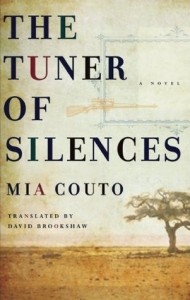A Spook-Filled Childhood
When I was a very little girl my aunt told me stories of La Llorona–of her imprisonment by her jealous husband and how she wandered the deserts of New Mexico wailing. I know this story varies, but that is the version that will always be true for me. As she told me this story, I snuck peeks at the blackness of a nearby closet and pictured her presence there. I still have a thing about closets.
Whether it was that story or some other inspiration, ghost stories are the first books I remember choosing for myself. Something about the thrill of the scare combined with insight into another plane of existence held me rapt and kept me coming back for more. I was raised without religion and I think in some ways I invested my sense of spirituality in the supernatural. As I grew older I started reading about more real horrors like the Holocaust and other mass murders, but ghost stories and the supernatural continued to interest me.
And then there was the ghost. When I played in our basement I often thought I heard my mother calling me. I’d run to the stairs to answer but she always said she hadn’t called. I didn’t think anything of it until one day I saw a woman in the doorway of a long, spooky hallway we had. It’s difficult to describe what she looked like but she wasn’t a solid form or detailed. All I remember is her long, brown hair and her yellow, flowered dress. I feel like I saw her twice. I think I was afraid when I saw her, but I don’t remember screaming.
I was obsessed with the paranormal for years. I read all the books and wished I had ESP. I played with a Ouija board and candles. I recited Bloody Mary into bathroom mirrors so many times that I still can’t look in the mirror after watching a scary movie.
Losing My Taste for Scares
I loved scary stories and movies well into my twenties. I may or may not be watching The Others right now as I type. But somewhere in the past few years the scares have touched a different part of my heart and I am more genuinely afraid of ghosts.
Perhaps this has something to do with a trip my husband and I took to Taos, New Mexico to see the Nicolai Fechin Museum. Some people say that Taos has a hum, that so much evil was committed there over the years and it’s infected the place so deeply you can hear it. I know we felt ill at ease when we drove into town and as we went to the store for supplies, but when we checked into an amazingly large hotel suite at a very cheap price, I think we forgot all of that. But then, sometime late into the night, I woke up and I could feel something in our room. My memory is of a shape standing by the window. Clayton remembers it being on the other side of the room near the closet. I was so scared I couldn’t even move to turn on the lamp. Somehow my husband and I figured out we were both awake and experiencing this same feeling. We got out of bed, hurried down the corridor, and set up camp in the living room with all the lights on. When dawn came, we got the hell out of town. Even today I have difficulty talking about that night and how I felt.
I still enjoy the odd ghost story or movie, but these days I seek out Spanish directors who tend to focus more on the coexistence of ghosts and the living than on movies with big scares.
What About Edith Wharton
What I found so astounding about Wharton’s book is that it isn’t scary. Or at least not mostly. There are people in the stories who are scared of the ghosts, but for the most part the ghosts are a kind of curiosity. They portend death or provide echoes of it, but they don’t jump out of closets or levitate beds. They remind me in some way of the ghosts in Isabel Allende’s The House of the Spirits. They are a natural part of the life cycle. I like this idea of acceptance and of the layers of time and existence that co-exist.
There are stories that feel unfinished and stories that lack tension, but I still enjoyed this book very much. And as much as I say I’m not up to a good scare anymore, “All Souls'” was both the scariest of the stories and the one I enjoyed the most.
I don’t know if ghosts are real, but I do believe in the continuity of energy. And while I will still be closing my closet tight tonight, I’m also going to see if I can get through The Sixth Sense while my husband’s away and not have to dodge the bathroom mirror afterwards. Session 9 will have to wait until he’s back, though.
If you want to explore the spiritual side of ghost stories, pick up a copy of The Ghost Stories of Edith Wharton from Bookshop.org. Your purchase keeps indie booksellers in business and I receive a commission.

 As a writer, how do you critique the work of friends? In private you read drafts of their work and point out the parts you love and areas for improvement. You both know you can’t be objective but that red-penning a draft is in fact a loving act that will make the work stronger. With any luck you are different enough writers that you can learn from each other but also at similar stages so that it’s an equal exchange.
As a writer, how do you critique the work of friends? In private you read drafts of their work and point out the parts you love and areas for improvement. You both know you can’t be objective but that red-penning a draft is in fact a loving act that will make the work stronger. With any luck you are different enough writers that you can learn from each other but also at similar stages so that it’s an equal exchange. I wrote recently about a
I wrote recently about a